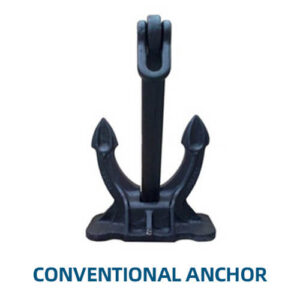Key Features of Foam Fenders:
- Construction:
- Foam Core: Made from closed-cell polyurethane foam, which is resilient, lightweight, and provides excellent energy absorption. The closed-cell structure ensures that the foam does not absorb water, maintaining its buoyancy and performance over time.
- Outer Shell: Covered with a tough, abrasion-resistant layer of rubber or synthetic material, such as neoprene or EPDM. This outer layer protects the foam core from environmental damage, impacts, and wear.
- Design and Shapes:
- Shapes: Foam fenders come in various shapes, including cylindrical, spherical, and rectangular panels. Each shape is suited to different applications and provides different levels of impact protection.
- Sizes: Available in a range of sizes, from small fenders for smaller vessels to large fenders for commercial ships and marine structures. The size and design of the fender can be customized based on specific needs and operational requirements.
- Operational Principles:
- Impact Absorption: The foam core compresses upon impact, absorbing and dissipating the energy from collisions. This helps to reduce the force transmitted to both the vessel and the dock or other structure, minimizing damage.
- Buoyancy: Foam fenders are buoyant and float on water, providing effective protection without the need for external inflation.
- Applications:
- Vessel Protection: Used to protect ships and boats during berthing and mooring operations. Foam fenders help prevent damage to the vessel’s hull and ensure safe docking.
- Dock and Pier Protection: Installed on docks, piers, and other marine structures to absorb the impact forces from vessels and reduce wear and tear on the infrastructure.
- Marine and Offshore Platforms: Employed on floating docks, offshore platforms, and other marine structures to provide cushioning and impact protection during operations.
- Advantages:
- Effective Impact Absorption: The closed-cell foam core provides excellent shock absorption, reducing impact forces and protecting both vessels and structures from damage.
- Durability: The outer rubber or synthetic layer is designed to withstand harsh marine environments, including UV rays, saltwater, and physical abrasion.
- Maintenance-Free: Foam fenders do not require inflation or frequent maintenance, making them a low-maintenance option compared to pneumatic fenders.
- Lightweight: Foam fenders are generally lighter than solid rubber fenders, making them easier to handle and install.
- Maintenance and Care:
- Inspection: Regularly inspect foam fenders for signs of wear, damage, or degradation. Check the outer layer for cuts or abrasions that could compromise the foam core.
- Cleaning: Clean the fenders periodically to remove debris, algae, or other contaminants that could affect their performance or appearance.
- Repairs: Minor damage to the outer layer can often be repaired using suitable materials or coatings. However, significant damage may require replacement of the fender.
- Safety Considerations:
- Proper Installation: Ensure that foam fenders are properly installed and positioned to provide effective protection and prevent misalignment or accidental detachment.
- Compatibility: Select the appropriate size and type of foam fender for the specific application to ensure optimal performance and protection.
Types of Foam Fenders:
- Standard Foam Fenders:
- General Use: Suitable for general berthing and mooring applications. These fenders are commonly used on docks, piers, and smaller vessels.
- High-Performance Foam Fenders:
- Heavy-Duty: Designed for applications requiring enhanced impact absorption and durability, such as large commercial ships and offshore platforms.
- Customized Foam Fenders:
- Special Applications: Tailored to meet specific operational requirements or unique applications, such as specialized marine operations or custom-sized fenders.
Foam fenders provide effective and durable protection for marine operations, offering excellent impact absorption and low maintenance. Their design and construction make them a valuable choice for a wide range of applications, ensuring safe and damage-free berthing and mooring.






